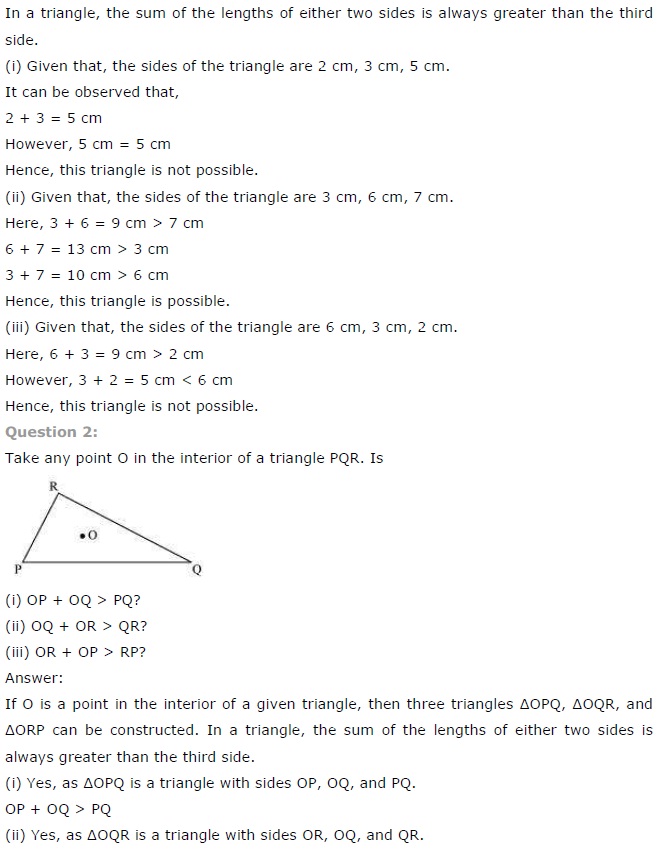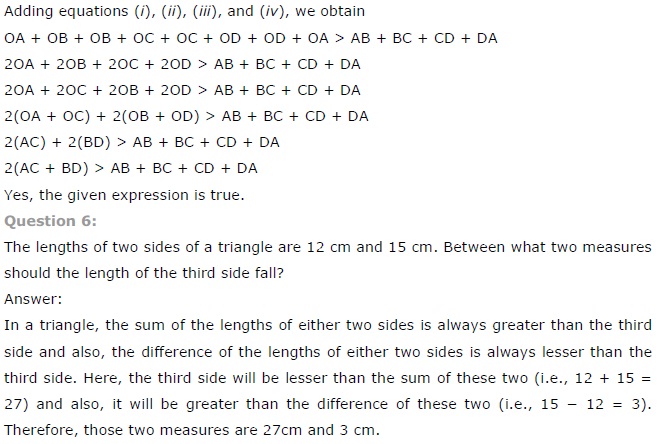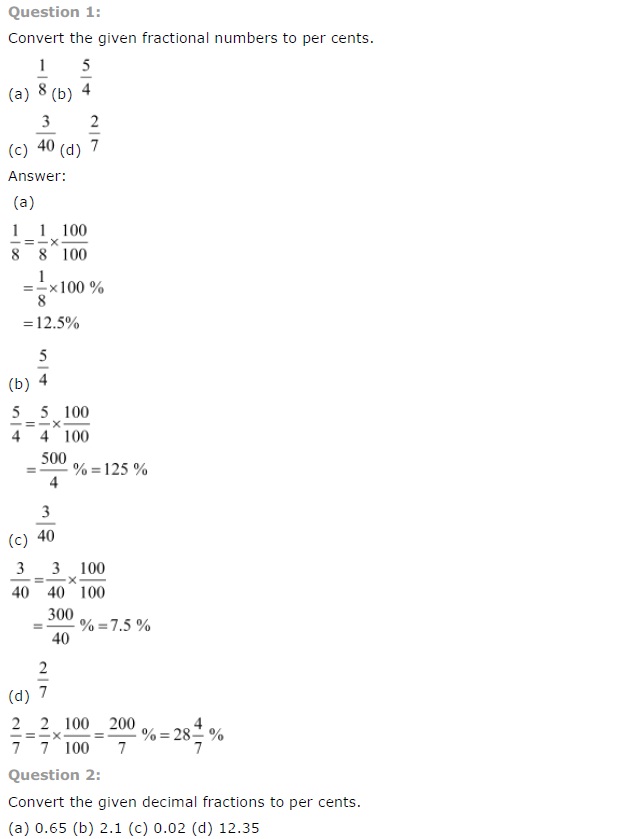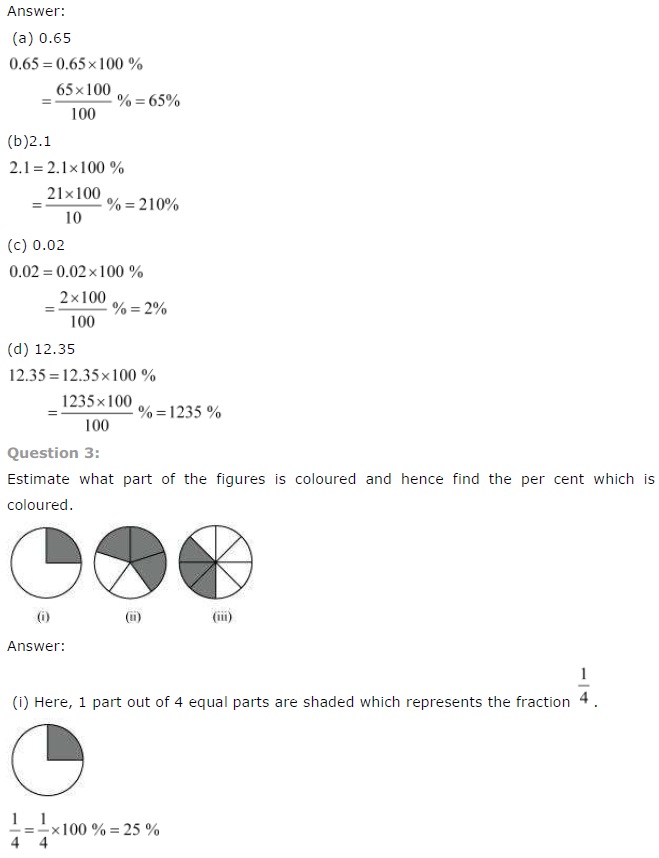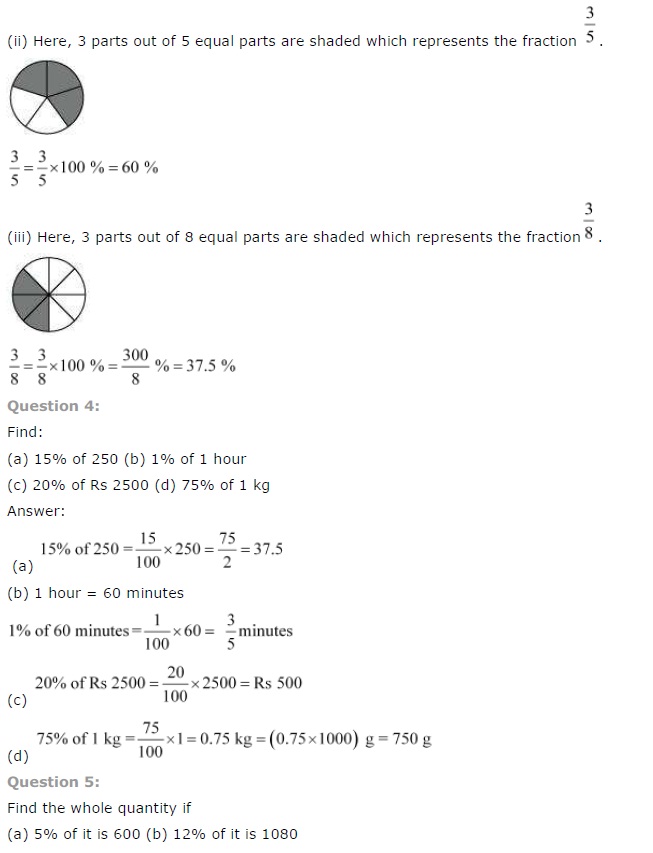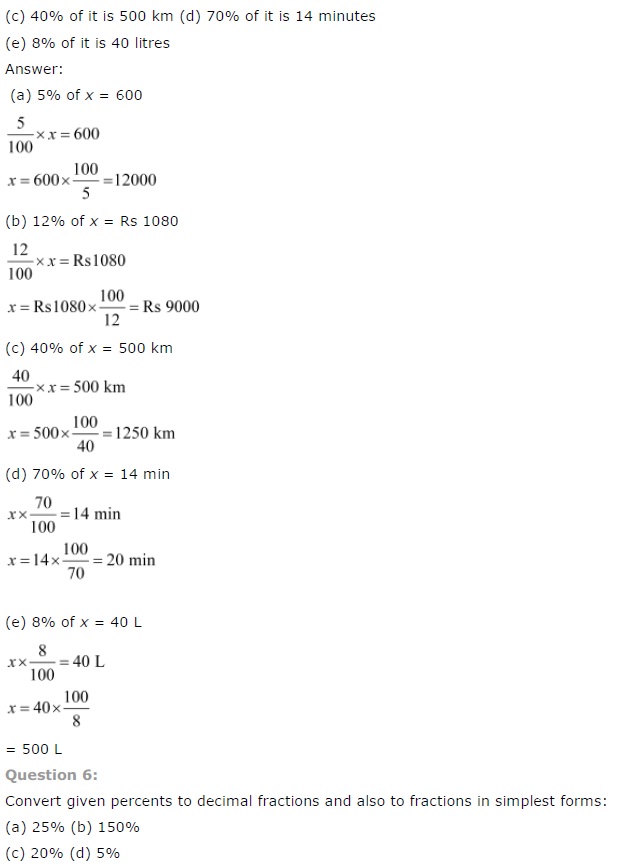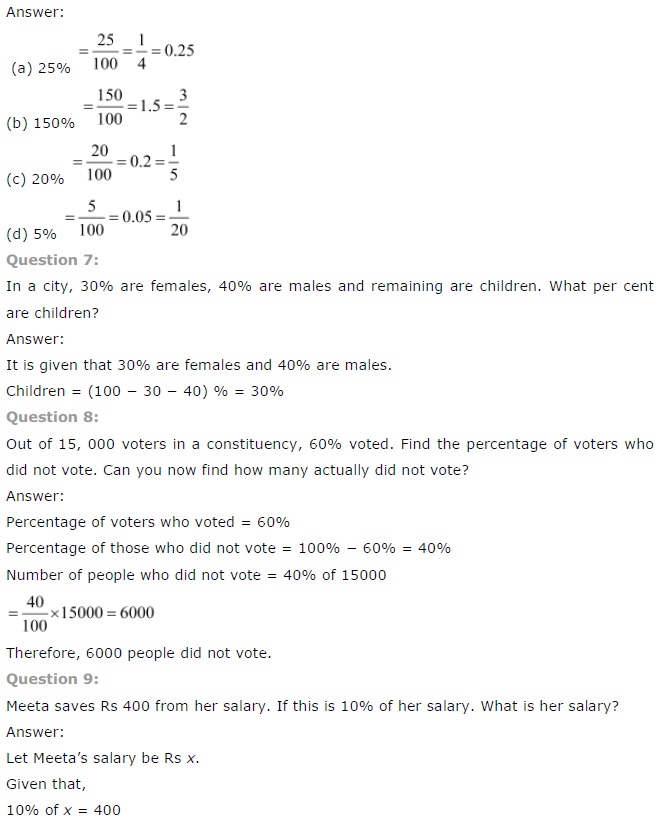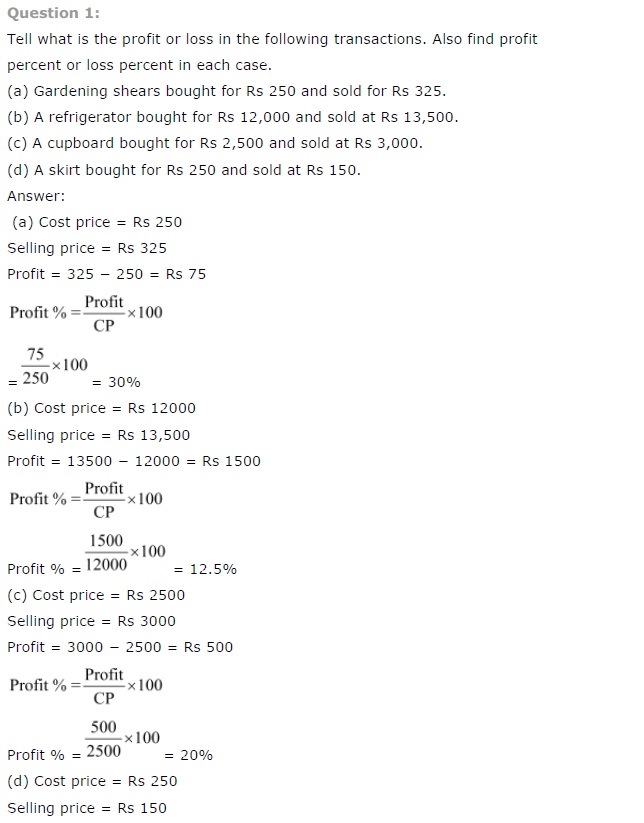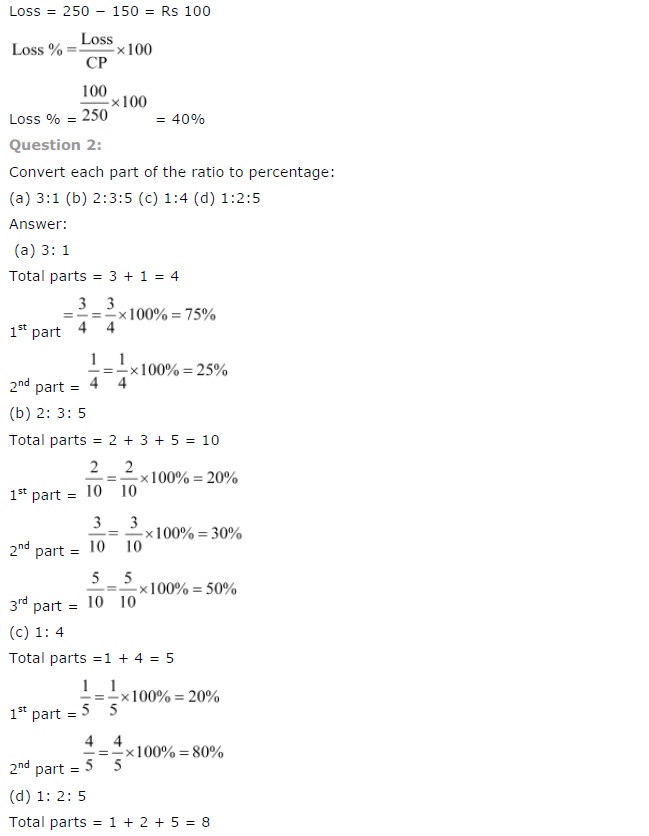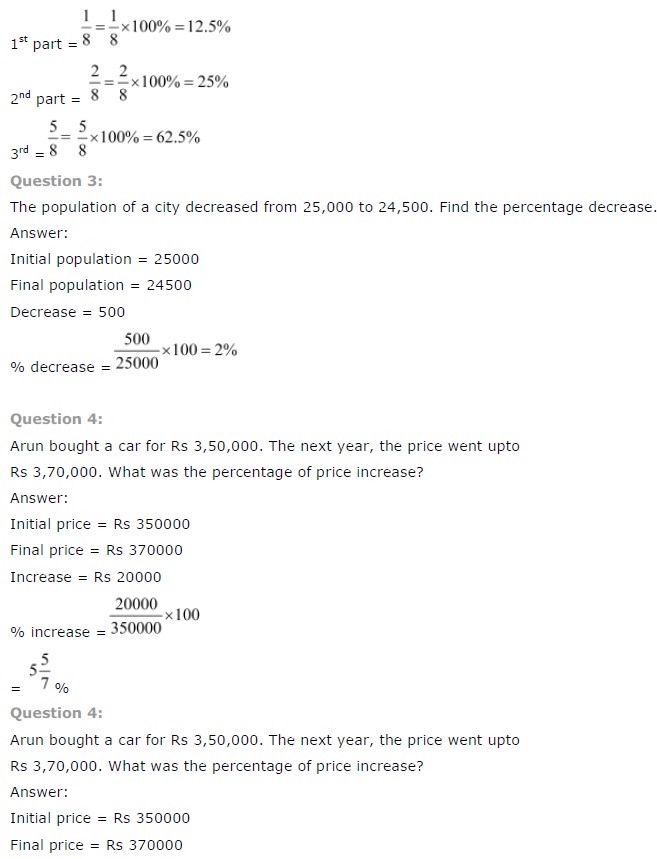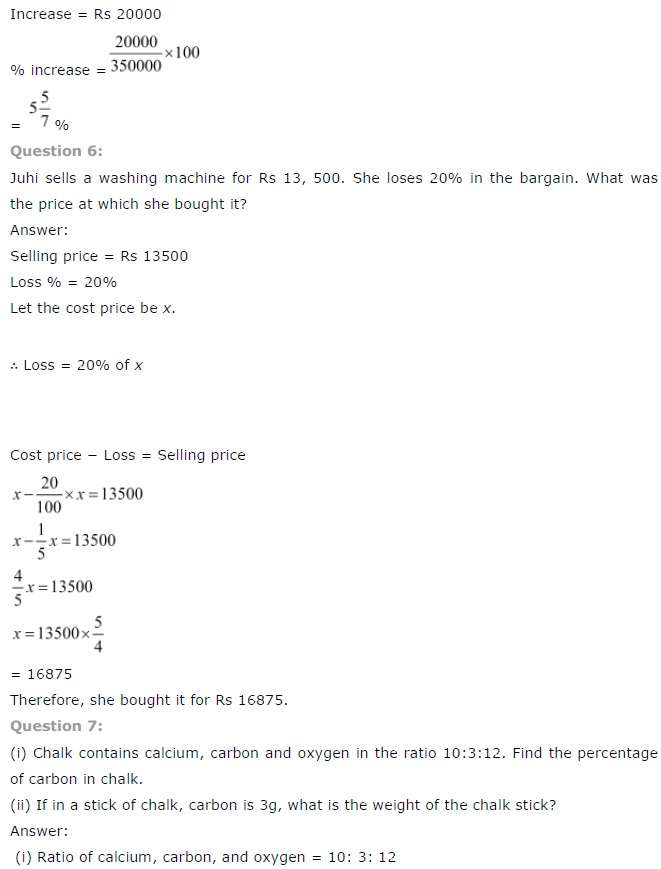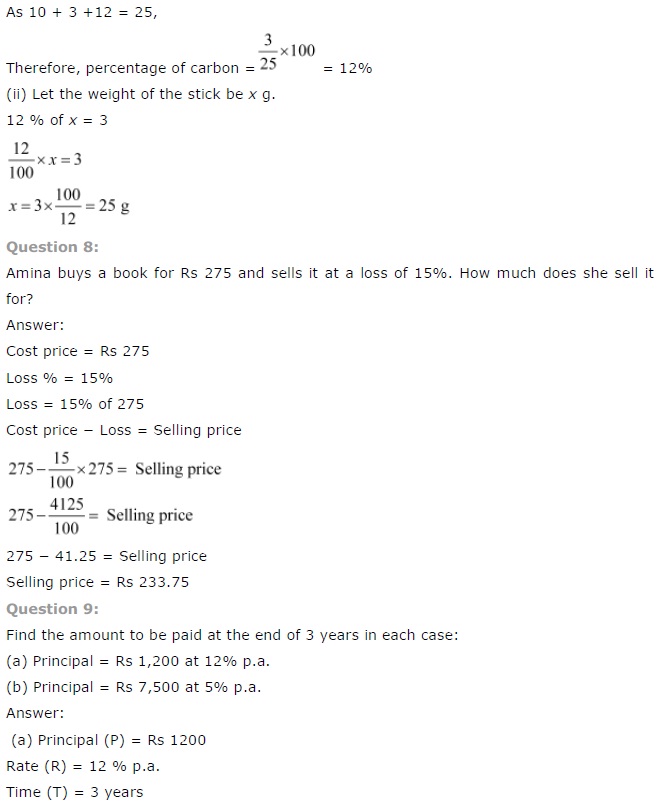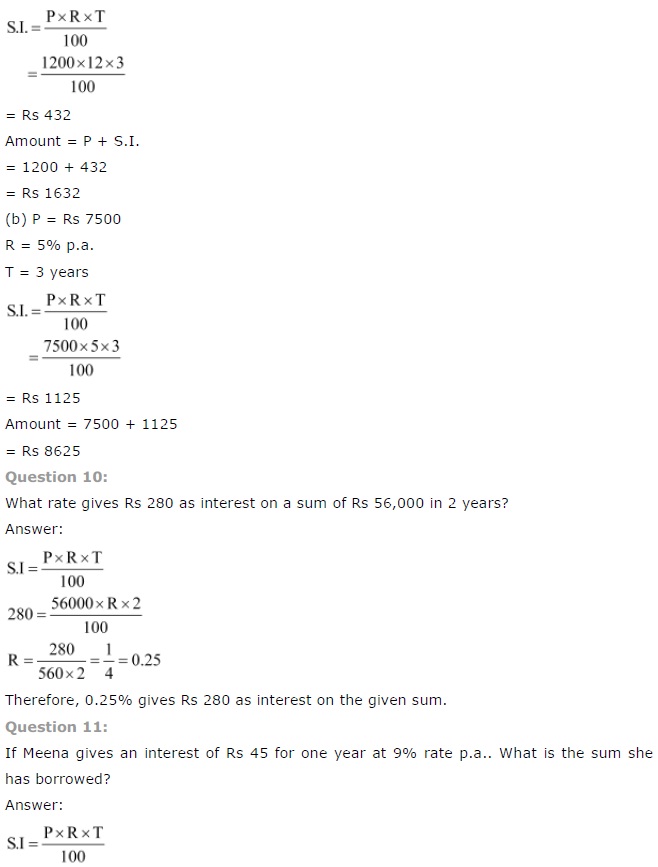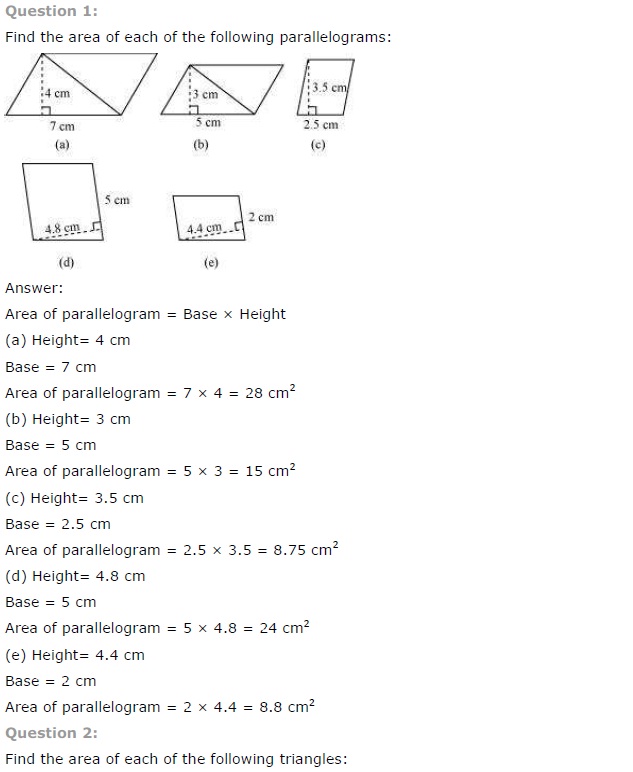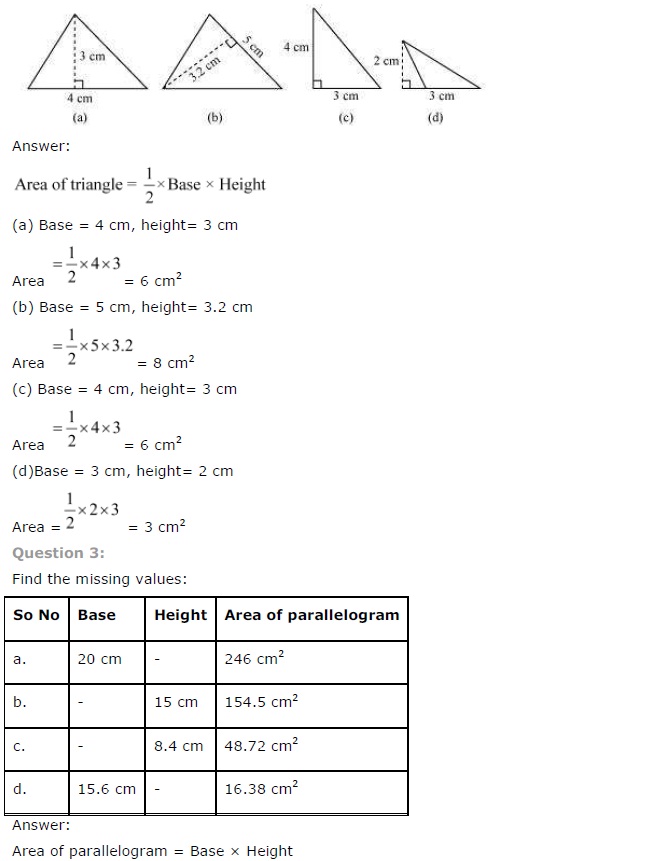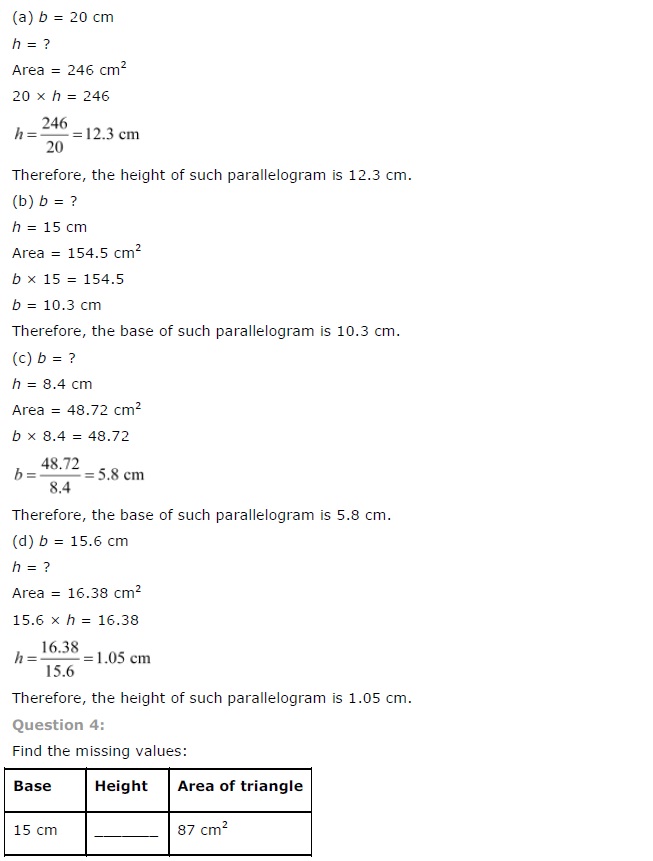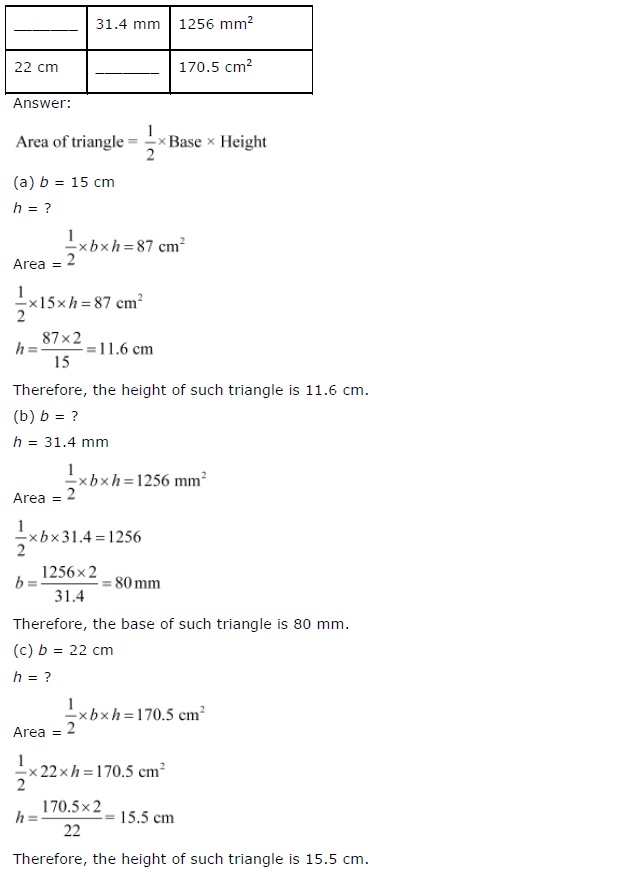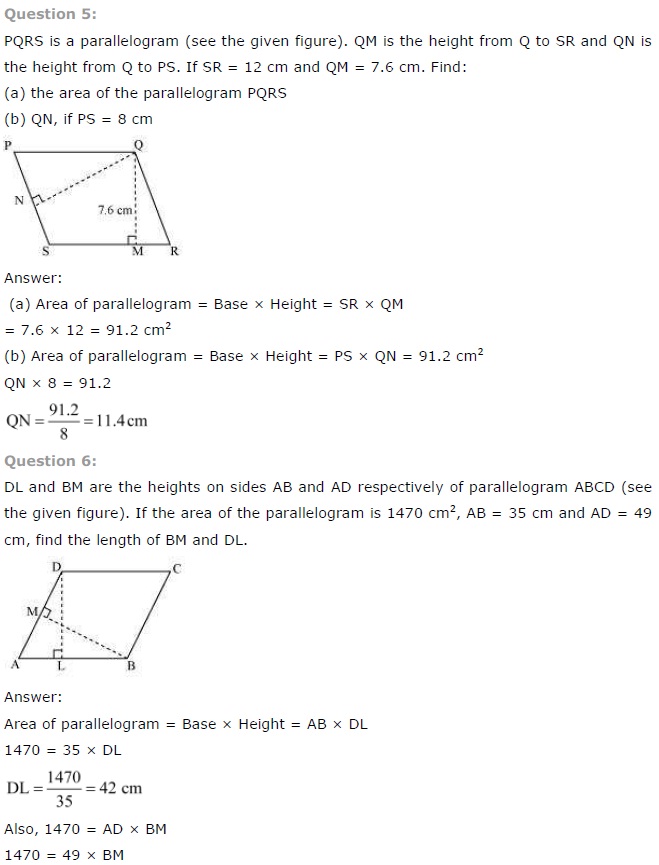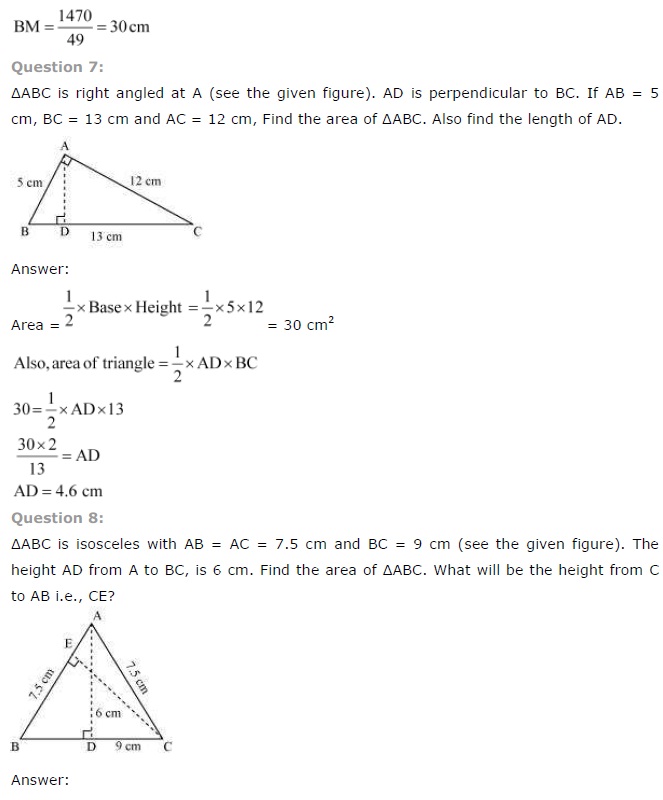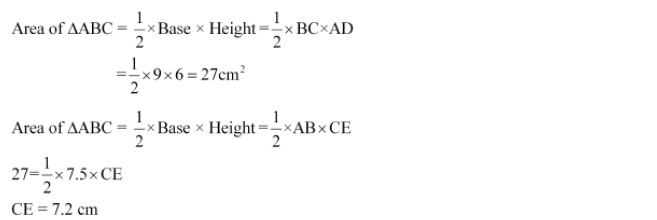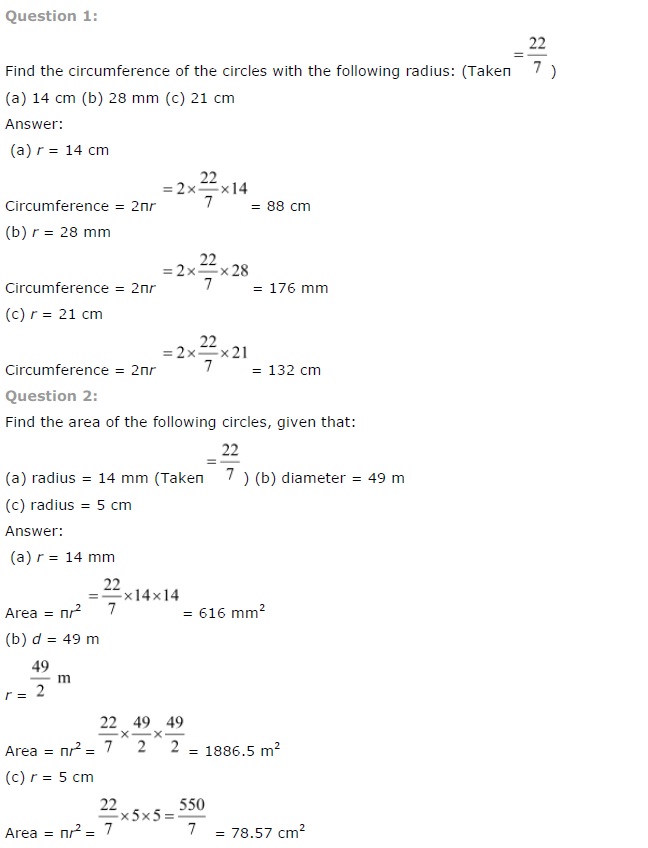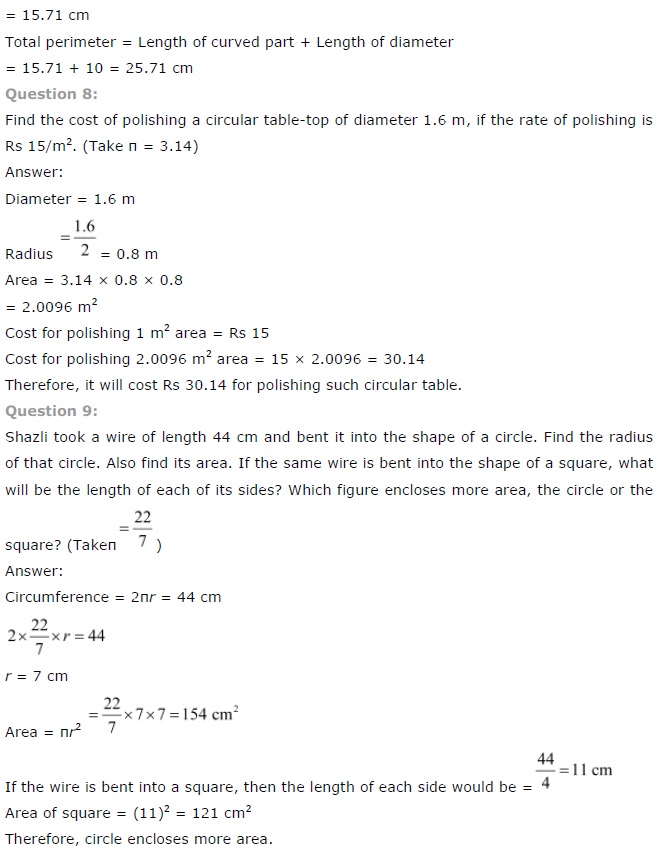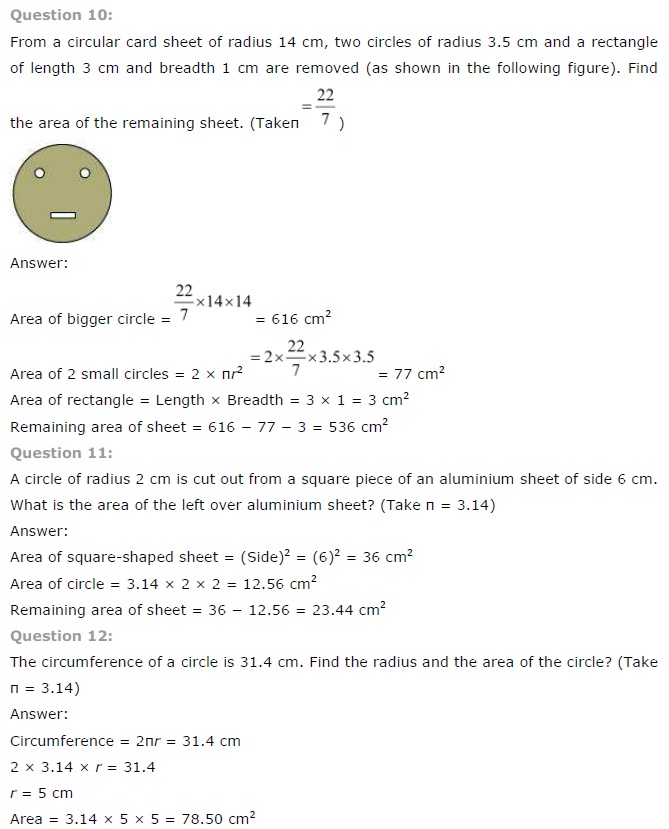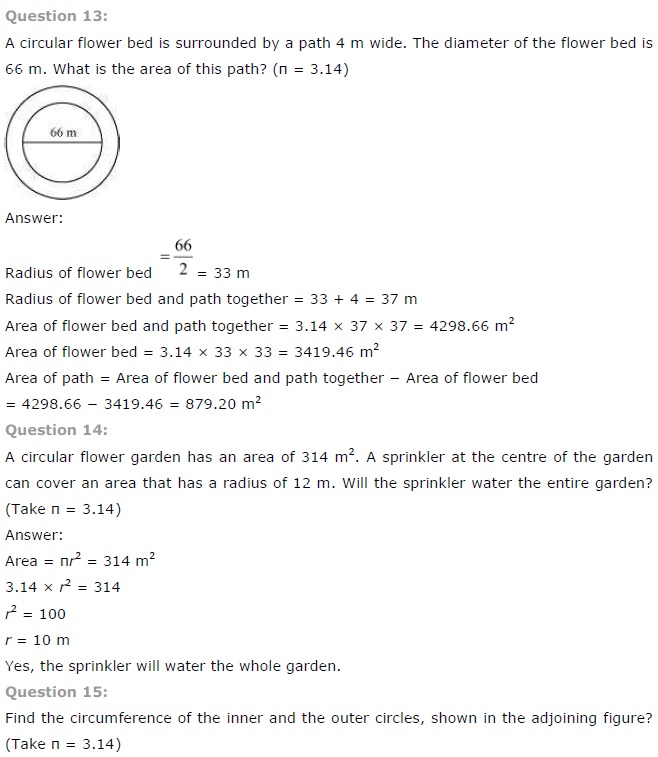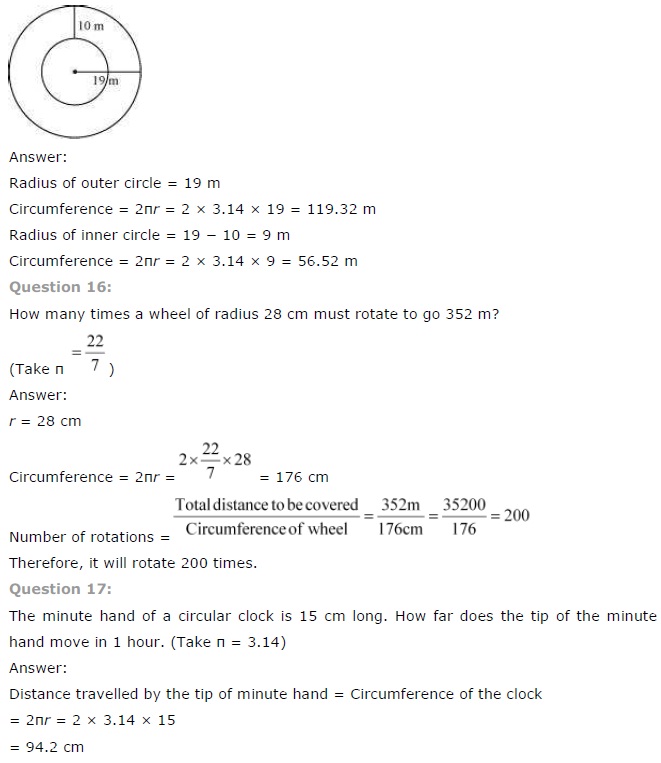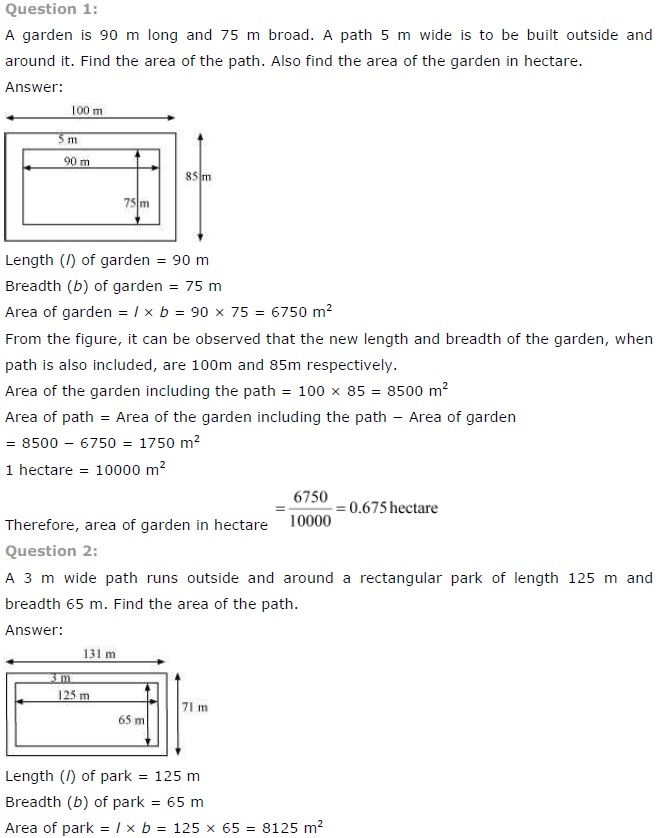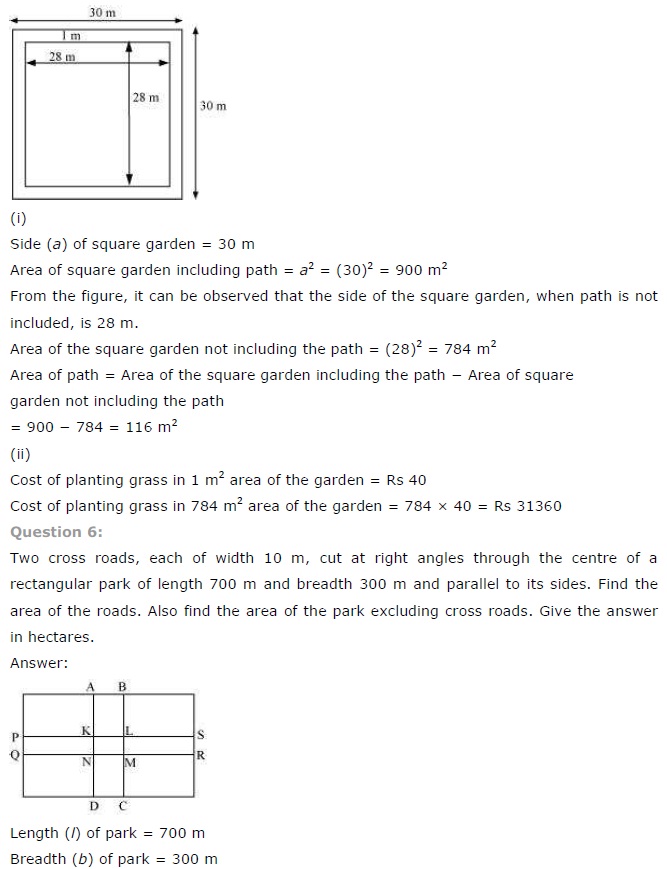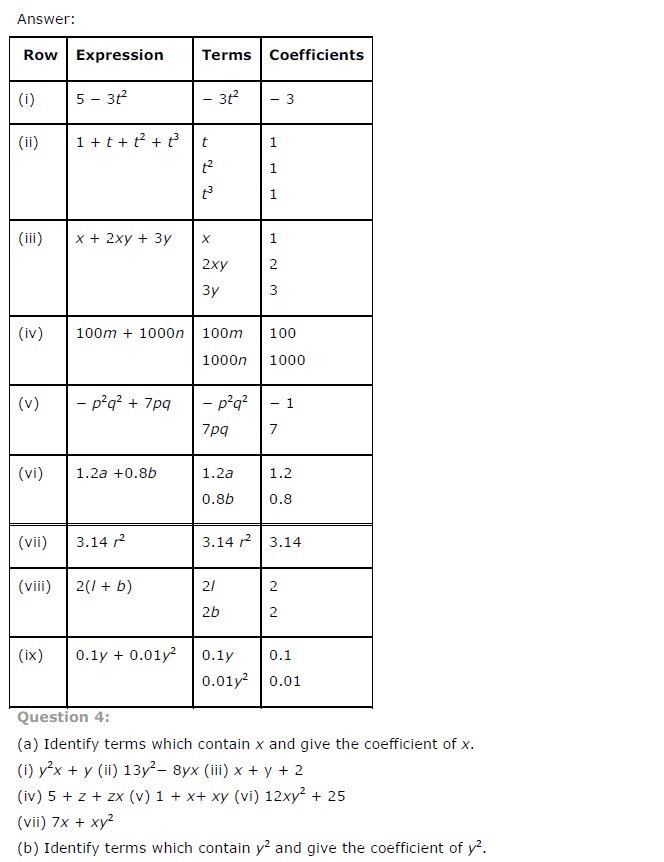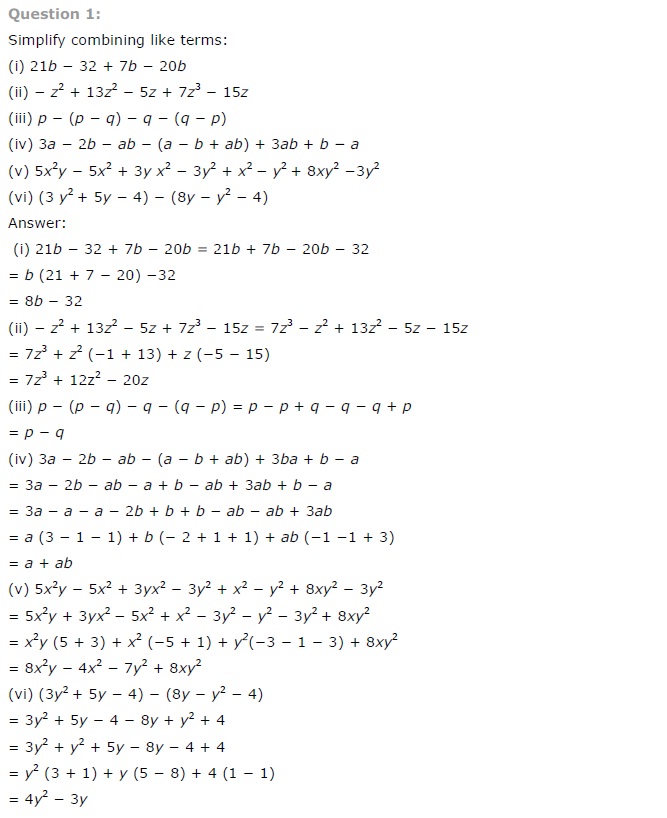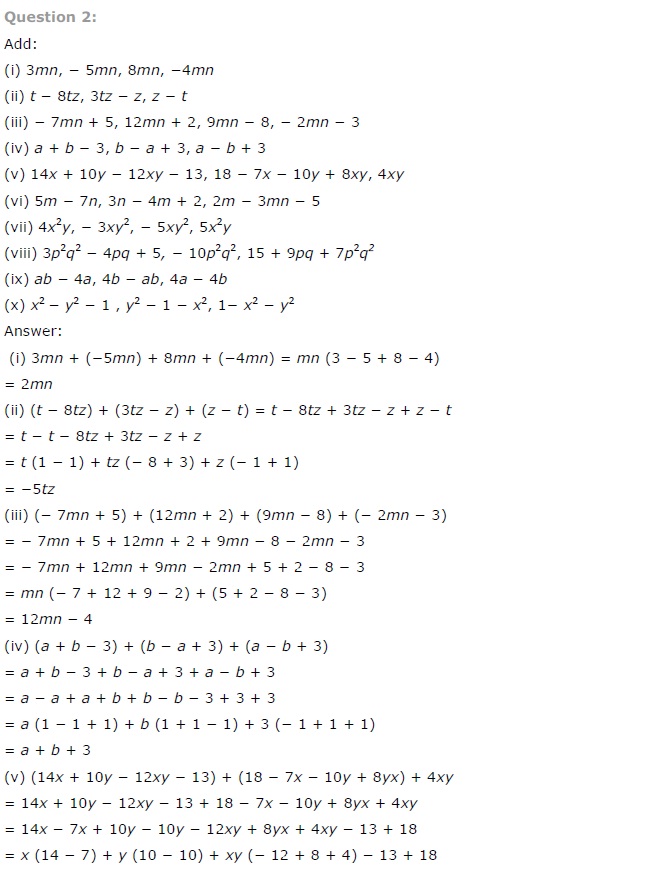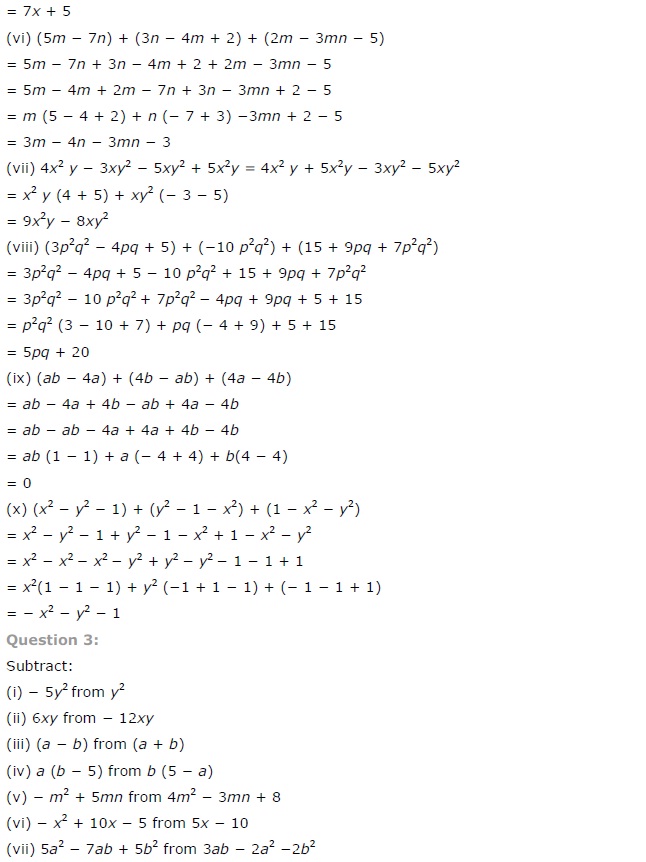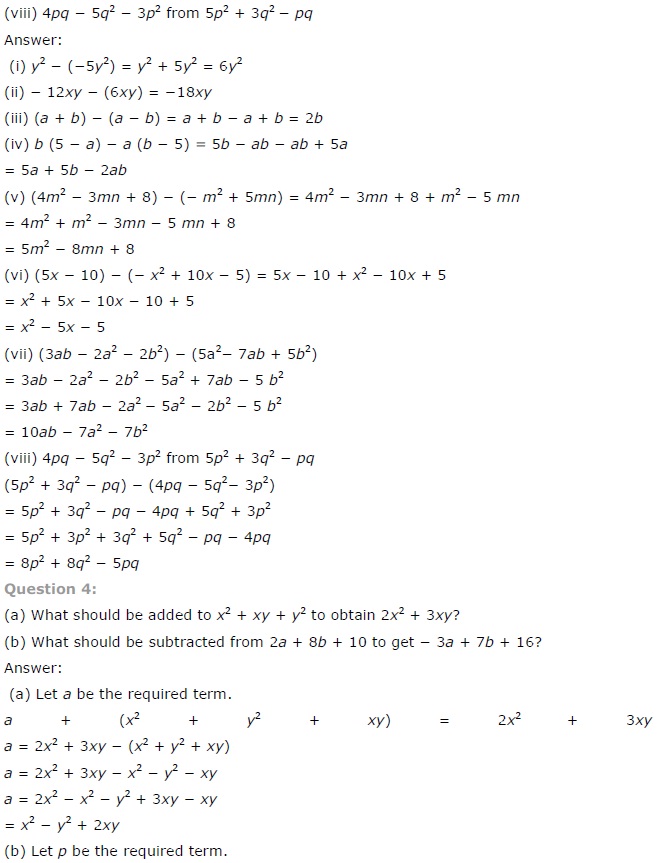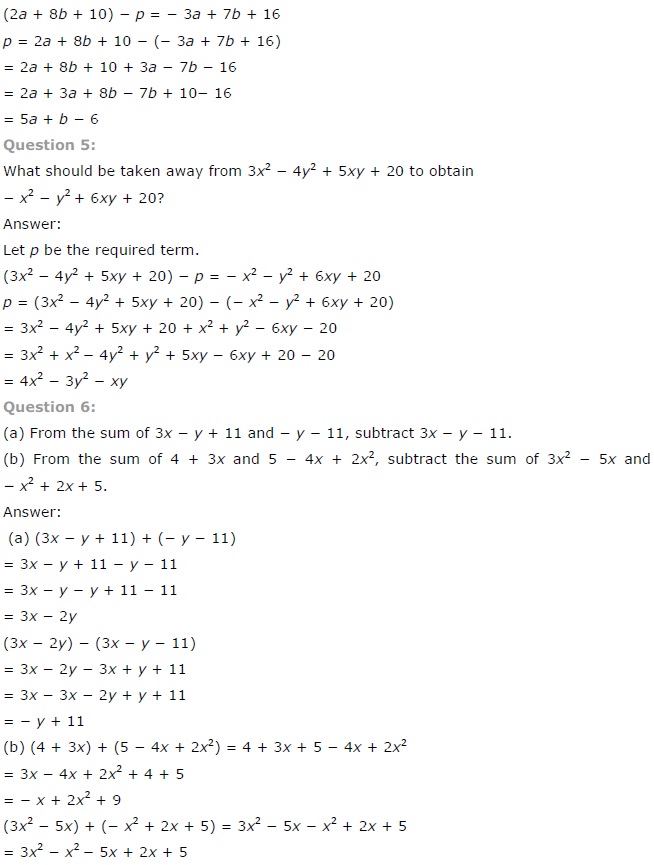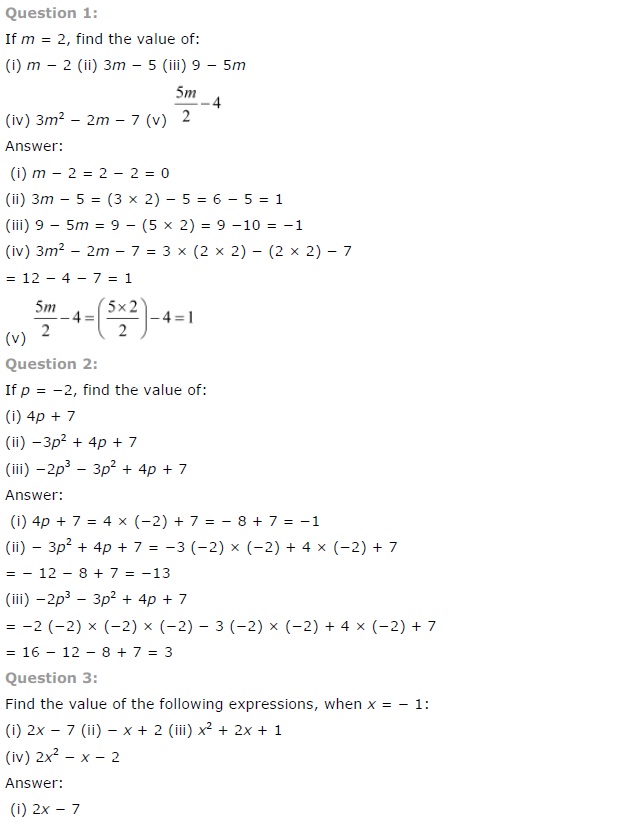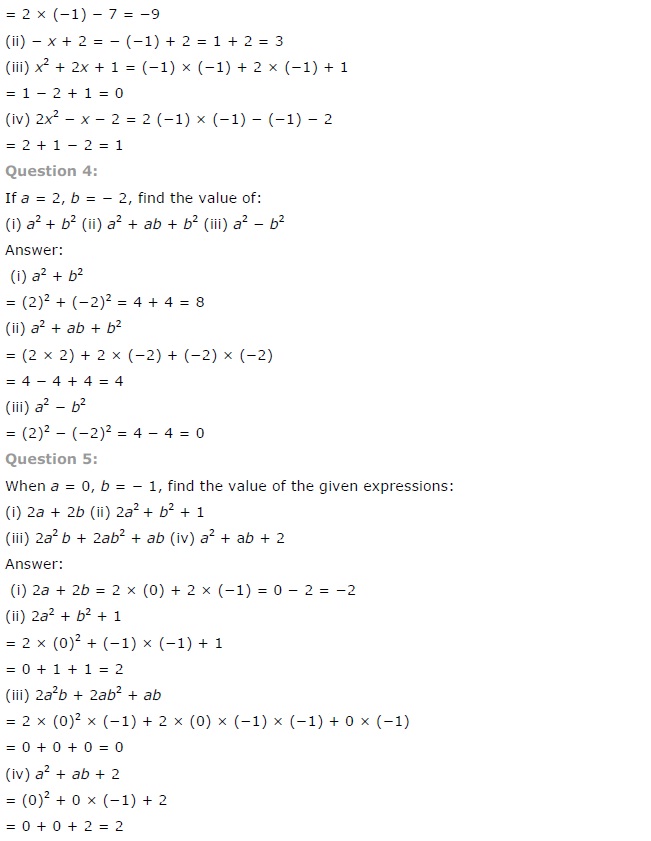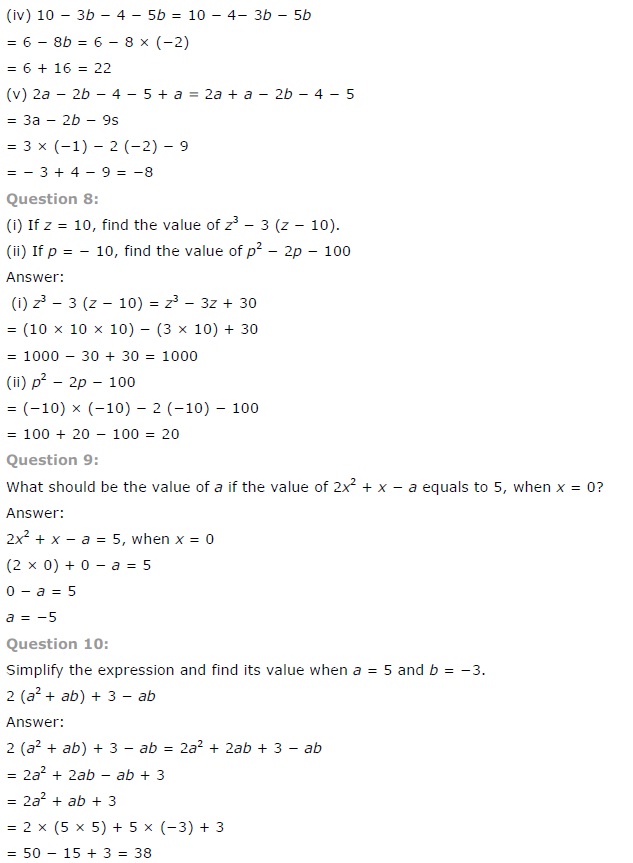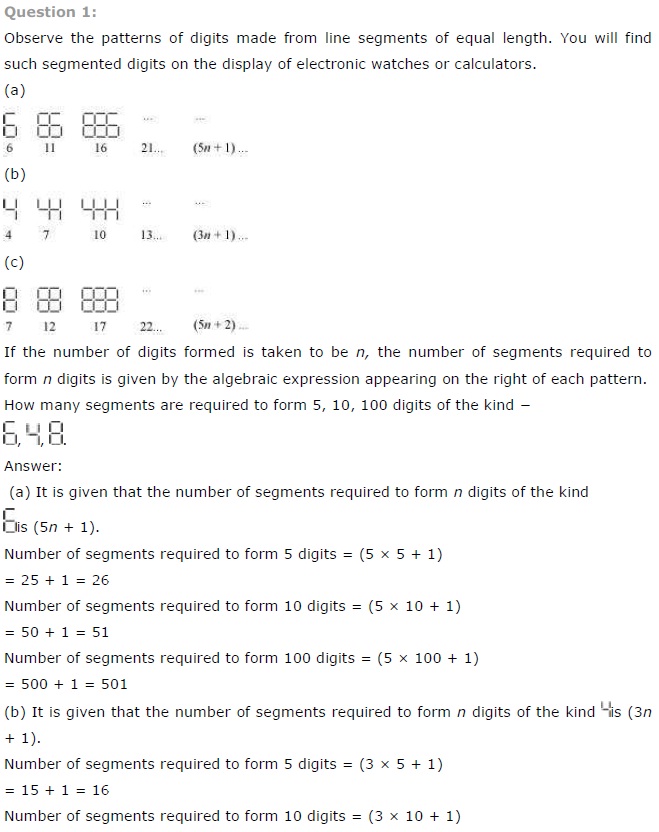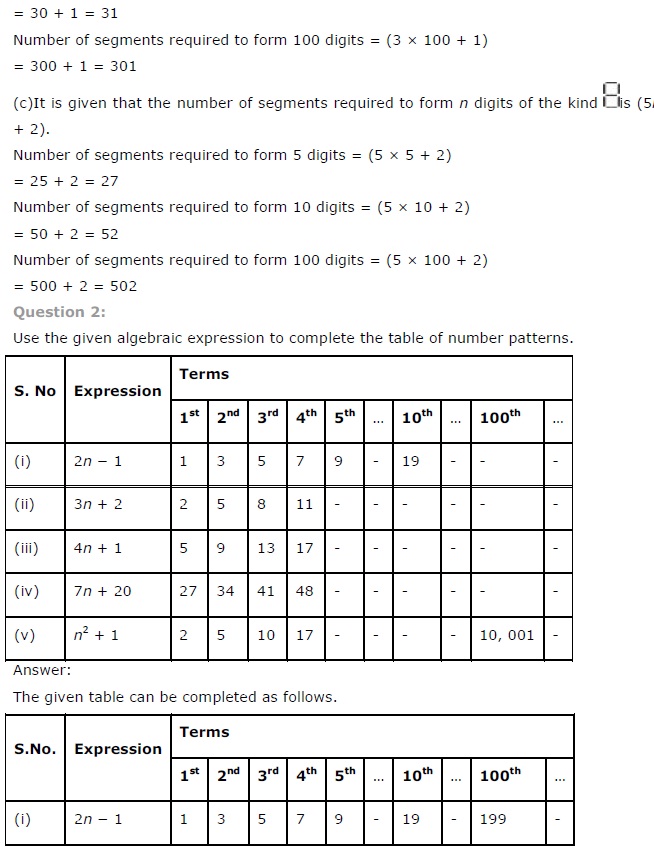NCERT Exemplar Class 11 Biology Solutions Transport in Plants
Multiple Choice Questions
1.Which of the following statements does not apply to reverse osmosis?
(a) it is used for water purification.
(b) In this technique, pressure greater than osmotic pressure is applied to the system.
(c) It is a passive process.
(d) It is an active process.
Soln. (c) : Reverse osmosis is also known as hyperfiltration. It is a technique that allows the removal of water molecules from various contaminants through a semi-permeable membrane. The process requires a driving force, viz, pressure from a pump, to push the fluid through the membrane. Reverse osmosis is used in removing salts from saline water and extra purification of water.
2.Which one of the following will not directly affect transpiration?
(a) Temperature
(b) Light
(c) Wind speed
(d) Chlorophyll content of leaves
Soln. (d): External factors affecting the rate of transpiration are : atmospheric temperature, relative humidity, light, wind velocity, atmospheric pressure and available soil water. Some internal factors also affect rate of transpiration e.g., leaf area, leaf structure and age of plants. Chlorophyll content of leaves does not directly affect rate of transpiration.
More Resources for CBSE Class 11
3.The lower surface of leaf will have more number of stomata in a
(a) dorsiventral leaf
(b) isobilateral leaf
(c) both (a) and (b)
(d) none of these.
Soln.(a): Transpiration is the evaporative loss of water by plants. It occurs mainly through the stomata in the leaves. Usually the lower surface of a dorsiventral (often dicotyledonous) leaf has a greater number of stomata while in an isobilateral (often monocotyledonous) leaf, there c,re almost equal number of stomata on both surfaces.
4.The form of sugar transported through phloem is
(a) glucose (b) fructose
(c) sucrose (d) ribose.
Soln.(c): The sugars, synthesised in leaves (as a result of photosynthesis) are translocated downwards, upwards and laterally to all the other organs including storage organs mainly through phloem. These sugars are translocated in the form of sucrose.
5.The process of guttation takes place
(a) when the root pressure is high and the rate of transpiration is low
(b) when the root pressure is low and the rate of transpiration is high
(c) when the root pressure equals the rate of transpiration
(d) when the root pressure as well as rate of transpiration are high.
Soln.(a): The process of exudation of liquid drops from the edges of leaves is called guttation. Usually it occurs though special structures, called hydathodes. It is the process by which fully turgid plants remove extra water. The cause of guttation is mainly root pressure (when the root pressure is high and rate of transpiration is low, guttation takes place).
6.Which of the following is an example of imbibition?
(a) Uptake of water by root hair
(b) Exchange of gases in stomata
(c) Swelling of seed when put in soil
(d) Opening of stomata
Soln.(c) : Imbibition is a process in which water is absorbed by solid particles causing them to enormously increase in volume without forming a solution. The classical examples of imbibition are absorption of water by seeds and dry wood.
7.When a plant undergoes senescence, the nutrients may be
(a) accumulated
(b) bound to cell wall
(c) translocated
(d) none of these.
Soln.(d) : In case of perennial plants, plant parts undergo senescence and nutrient resources (minerals and carbohydrates) shift away or are translocated from the senescened part to other parts. In leaves at the time of senescence we observe loss of chlorophyll, RNA and protein, transport of nutrients and then abscission, but in case of annual plants, whole plant undergoes senescence and nutrients are used up and no translocation, accumulation and bounding to cell wall takes place. ’
8.Water potential of pure water at standard temperature is equal to
(a) 10 (b) 20
(c) Zero(d) none of these.
Soln.(c)
9.Choose the correct option. Mycorrhiza is a symbiotic association of fungus with root system which helps in
A.Absorption of water
B.Mineral nutrition
C.Translocation
D.Gaseous exchange
(a) Only A
(b) On!yB
(c) both A and B
(d) both B and C
Soln.(c) : The roots of some higher plants are associated with fungal mycelia. Such an association is called mycorrhiza. It represents a mutualistic (symbiotic) association between the root system of higher plants and fungal hyphae. The fungal hyphae form a network around the young root and invade the root cells. The external hyphae greatly increase the surface area for absorption of minerals and water from a much larger volume of soil that perhaps the roots alone cannot do.
10.Based on the figure given below which of the following statements is not correct?
![ncert-exemplar-class-11-biology-solutions-transport-in-plants-1]()
(a) Movement of solvent molecules will take place from chamber A to B
(b) Movement of solute will take place from A to B
(c) Presence of a semipermeable is a pre-requisite for this process to occur.
(d) The direction and rate of osmosis depends on both the pressure gradient and concentration gradient.
Soln.(b) : Solution A and solution B are separated by a semi-permeable membrane. Solution A has higher water potential. Therefore, osmotic movement of water molecules (solvent molecules) will occur from solution A to B. Solute particles cannot pass through semi-permeable membrane.
11.Match the following and choose the correct option.
A.Leaves (i) Anti-transpirant
B.Seed (ii)Transpiration
C.Roots (iii)Negative osmotic potential
D.Aspirin (iv) Imbibition
E.Plasmolysed cell (v) Absorption Options:
(a) A-(ii), B-(iv), C-(v), D-(i), E-(iii)
(b) A-(iii), B-(ii), C-(iv), D-(i), E-(v)
(c) A-(i), B-(ii), C-(iii),D-(iv), E-(v)
(d) A-(v), B-(iv), C-(iii),D-(ii), E-(i)
Soln.(a)
12. Mark the mismatched pair.
(a) Amyloplast – Store protein granule
(b) Elaioplast – Store oils or fats
(c) Chloroplasts- Contain chlorophyll pigments
(d) Chromoplasts – Contain coloured pigments other than chlorophyll
Soln.(a) : Amyloplasts are non pigmented organelles found in some plant cells. They are responsible for synthesis and storage of starch granules, through polymerisation of glucose.
Short Answer Type Questions
1.Smaller, lipid soluble molecules diffuse faster
through cell membrane, but the movement of hydrophilicsubstancesare facilitated by certain transporters which are chemically________
Soln. Smaller, lipid soluble molecules diffuse faster through cell membrane, but the movement of hydrophilic substances are facilitated by certain transporters which are chemically proteins.
2.In a passive transport across a membrane,
when two protein molecules move in opposite direction and independent of each other, it is called as ________
Soln.ln a passive transport across a membrane, when two protein molecules move in opposite direction and independent of each other, it is called as diffusion.
3.Osmosis is a special kind of diffusion, in which
water diffuses across the cell membrane. The rate and direction of osmosis depends upon both________
Soln. Osmosis is a special kind of diffusion, in which water diffuses across the cell membrane.
The rate and direction of osmosis depends upon both pressure and concentration gradient.
4.A flowering plant is planted in an earthen pot and irrigated. Urea is added to make the plant grow faster, but after sometime the plant dies. This may be due to___________
Soln. A flowering plant is planted in an earthen pot and irrigated. Urea is added to make the plant grow faster, but after some time the plant dies. This may be due to exosmosis.
5.Absorption of water from soil by dry seeds increases the___________ thus helping seedlings to come out of soil
Soln. Absorption of water from soil by dry seeds increases the pressure, thus helping seedlings to come out of soil. During germination of seedling imbibition pressure develops. .
6.Water moves up against gravity and even for a tree of 20 m height, the tip receives water within two hours. The most important physiological phenomenon which is responsible for the upward movement of water is___________ .
Soln.Water moves up against gravity and even for a tree of 20 m height, the tip receives water within two hours. The most important physiological phenomenon which is responsible for the upward movement of water is transpiration pull.
7.The plant cell cytoplasm is surrounded by both cell wall and cell membrane. The specificity of transport of substances are mostly across the cell membrane, because___________
Soln. The plant cell cytoplasm is surrounded by both cell wall and cell membrane. The specificity of transport of substances are mostly across the cell membrane, because cell wall is freely permeable while cell membrane is selectively permeable, for solutes.
8.TheC4 plants are twice as efficient as C3 plants in terms of fixing C02 but lose only___________ as much water as C3 plants for the same amount ofC02 fixed.
Soln. The C4 plants are twice as efficient as C3 plants in terms of fixingC02 but lose only half as much water asC3plants for the same amount of C02 fixed.
9.Movement of substances in xylem is unidirec-tional while in phloem it is bidirectional. Explain.
Soln. Direction of transport is determined by the sink or area of utilisation of the material under transport.
Xylem transport is unidirectional and up-wards from roots to shoot tips. Phloem trans-port food from source to sink where source is the part of plant which stores or synthesises food and sink is the part which needs or consumes food. These source and sink parts of a plant vary depending on the season or need of the plants, thus the food needs to travel in both upward and downward direction. So, phloem shows bidirectional movement of substance.
10.Identify the processes occurring in I, II and III
![ncert-exemplar-class-11-biology-solutions-transport-in-plants-2]()
Soln.
I – Uniport
II – Antiport
III – Symport
11 .Given below is a table. Fill in the gaps.
.![ncert-exemplar-class-11-biology-solutions-transport-in-plants-10]()
![ncert-exemplar-class-11-biology-solutions-transport-in-plants-11]()
Soln.
![ncert-exemplar-class-11-biology-solutions-transport-in-plants-3]()
12.Define water potential and solute potential.
Soln. Water potential (ψw ) is difference in chemical potential per molar volume of water in a system and that of pure water at the same temperature and pressure.Solute potential (ψs) is the decrease in chemical. potential of pure water due to presence of solute particles in it.
13. Why is solute potential always negative? Explain ψw = ψs + ψp
Soln. Water potential is zero for pure water. Addition of solutes further decreases the potential and therefore, chemical potential is always negative or less than zero,
ψw = ψs + ψp
ψw= Water potential of a system
ψs = Solute potential (Value negative)
ψp = Pressure potential (Value positive)
14. An onion peel was taken and
(a) Placed in salt solution for five minutes.
(b) After that it was placed in distilled water. When seen under the microscope what would be observed in (a) and (b)?
Soln.In condition (a) plasmolysis or shrinkage of protoplasm away from the cell wall will be observed.
In condition (b) deplasmolysis or swelling of shrunken protoplasm will be observed. As a result, the protoplasm will again come in contact with cell wall
15.Differentiate between apoplast and symplast pathways of water movement. Which of these would need active transport?
Soln. In apoplast pathway, non-living parts of plant body are involved as passage way i.e., cell walls and intercellular spaces.
In symplast pathway living parts of plant body are involved as passage way i.e., protoplasts connected by plasmodesmata.
Symplast pathways of water movement need active transport.
16.How does most of the water moves within the root?
Soln. Most of the water moves passively in the root through the apoplast except in the region of functional endodermis because the casparian strip present in endodermis blocks the apoplastic pathway and water has to enter the symplast.
17. Give the location of Casparian strip and explain its role in the water movement.
Soln. Casparian strips are found in the endodermal cell walls of plant roots. It prevents water movement from returning to the cortex from pericycle, consequently a positive hydrostatic pressure is established in vascular tissue.
18. Differentiate between guttation and transpiration.
Soln. Differences between guttation and transpiration are as follows.
![ncert-exemplar-class-11-biology-solutions-transport-in-plants-4]()
19. Transpiration is a necessary evil in plants. Explain.
Soln. Transpiration causes loss of huge amount of water absorbed by plants and leads to wilting and injury in plants. It also checks photosynthesis, reduces growth and if it is too severe, it may cause death by desiccation. Inspite of various detrimental disadvantages the plants cannot avoid transpiration due to their peculiar structure of leaves which is basically meant for gaseous exchange during respiration and photosynthesis. Besides this, transpiration provides the necessary pull required for ascent of sap. Therefore, transpiration is also regarded as “necessary evil” by Curtis (1926) or “unavoidable evil” by Steward (1959).
20. Describe briefly the three physical properties of water which help in ascent of water in xylem.
Soln.Three properties of water essential for its ascent in xylem are cohesive or cohesion force, adhesive or adhesion force and surface tension.
(i) Cohesion force: It is the force by which water molecules remain attached to one another. The force develops due to hydrogen bonds amongst the water molecules. Cohesion provides tensile strength against negative pressure exerted by transpiration pull.
(ii) Adhesion force: It is the force of attraction between water molecules and inner surface of xylem channels. Adhesion force adds tc tensile strength of water.
(iii) Surface tension: It refers to the higher attraction present amongst water molecules at the interphase between liquid and gaseous phase.
21.A gardener forgot to water a potted plant for a day during summer, what will happen to the plant? Do you think it is reversible? If yes, how?
Soln.Yes, watering of potted plant in summer for a day will cause partial water deficit in the plant. It will result in loss of turgidity in softer tissue. The plant will show wilting or shrivelled and droop appearance of leaves. The condition is reversible if it is not watered only for a day. As the plant is watered next
day, the softer tissue will again become turgid and the leaves will appear stretched again.
22.Identify a type of molecular movement which is highly selective and requires special membrane proteins, but does not require energy.
Soln. Facilitated diffusion is a type of movement which is highly selective and requires special membrane protein, but does not require energy.
23. Correct the statements.
(a) Cells shrink in hypotonic solutions and swell in hypertonic solutions.
(b) Imbibition is a special type of diffusion when water is absorbed by living cells.
(c) Most of the water flow in the roots occurs via the symplast.
Soln.(a) Cells shrink in hypertonic solution and swell in hypotonic solution.
(a) Imbibition is a special type of diffusion when water is adsorbed by non-living parts.
(b) Most of the water flow in the roots occur via the apoplast.
Short Answer Type Questions
1.Minerals absorbed by the roots travel up the xylem. How do they reach the parts where they are needed most? Do all the parts of the plant get the same amount of the minerals?
Soln. Minerals absorbed are transported up the stem, to all parts of plant through the transpirational stream. They are needed the most in the growing region of the plant such as the apical meristem, young leaves, developing flowers, fruits, seeds and the storage organs. All parts do not require same amount of the minerals therefore they do not get the same amount of minerals. Minerals exit the xylem and enter the cells where they are needed by the mechanisms similar to ones by which they entered the xylem. Concentration of minerals is lower in the sink cells than that in the xylem sap, thus these minerals enter them passively. In some cells minerals already present in higher concentration may be taken in by active transport.
2.If one wants to find minerals and in the form they are mobilised in the plant, how will an analysis of the exudate help?
Soln.Exudate (plant sap) consists of xylem sap and small quantity of phloem sap. It is mixture of the organic/inorganic compounds and ions, minerals, sugar and amino acids.
Chemical analysis of plant sap will indicate which, mineral nutrient is transported in –
which form in the plants, e.g., nitrogen is absorbed and transported asN02 and N0 3 and sulphur as sulphate ion forms.
3.From your knowledge of physiology can you think of some method of increasing the life of cut plants in a vase?
Soln.Method of increasing the life of cut plants in a vase are as follows:
(i) Immerse the bases of cut plants immediate ly in water to prevent entry of air in the xylem channels i.e. cavitation. :
(ii)Adding a small quantity of cytokinin in water of the vase. Cytokinin delays the senescence of plant.
4.Do different species of plants growing in the same area show the same rate of transpiration at a particular time? Justify your answer.
Soln.Different species of plants growing
in the same area do not show the same rate of transpiration at a particular time. This is
because rate of transpiration depends upon various factors like the leaf area, thickness of cuticle, number and duration of opening of stomata and the amount of water absorption etc., and these factors are specific for each type of plant.
5.Water is indispensable for life. What properties of water make it useful for all biological processes on the earth?
Soln. Properties of water which make it useful for all biological processes on the earth are as follows:
(i) Water is a polar molecule which has both positive (hydrogen) and negative (oxygen) ends. Polarity of water molecules makes
water an excellent solvent. That is why, water forms 90% of the protoplasm and provides a medium for biochemical reactions.
(ii)Due to its solvent properties and strong adhesive and cohesive forces water serves as the means to transport, nutrients upwards (ascent of sap) to the shoot system in plants
(iii)Compared to other liquids water requires a relatively large energy input to raise its temperature. This large energy input requirement is important for organisms because it helps to buffer temperature fluctuations
(iv)The high latent heat of vaporisation of water enables organisms to cool themselves by evaporation of water (i.e. transpiration and sweating).
6.How is it that the intracellular levels of K+ are higher than extracellular levels in animal cells?
Soln. Animal cells operate ATP-energised Na+-K+ pump. It sends out 3Na+ ions into extracellular fluid and 2 K+ ions from extracellular fluid pass into inside of cells. As a result, intracellularK+ levels become higher than extracellular levels.
7.Cut pieces of beetroot do not leave colour in cold water but do so in hot water. Explain.
Soln. Cell membranes rupture at high temperatures. As a result the pigment contained in cell vacuoles of beetroot pieces leak out.
8.In a girdled plant, when water is supplied to the leaves above the girdle, leaves may remain green for some time then wilt and ultimately die. What does it indicate?
Soln.In a girdled plant, when water is supplied to the leaves above the girdle, leaves may remain green for some time because leaves can synthesise their food by photosynthesis. But, roots not only supply water to the leaves, they supply minerals too. Even when water is supplied to the leaves, they will not get minerals. Minerals are required for photolysis of water during photosynthesis (Mn), for completion of various reactions as they act as cofactors for various enzymes, for integrity of certain ribosomes (Mg) and production of chlorophyll (Mg, N) etc. Thus, leaves of girdled plant will die even when supplied with water due to deficiency of minerals.
9.Various types of transport mechanisms are needed to fulfil the mineral requirements of a plant. Why are they not fulfilled by diffusion alone?
Soln. Diffusion is very slow process for movement of non gaseous substances and allows movement of molecules for short distance only that too along the concentration gradient. In higher plants, requirements of minerals is quite high in plants due to contihued photosynthesis and growth which is not fulfilled by diffusion alone besides, some minerals have to be transported against the concentration gradient. Therefore plants use various channels for mineral transport like facilitated diffusion and active transport.
10.How can plants be grown under limited water supply without compromising on metabolic activities?
Soln. Plants can be grown under limited water supply without compromising on metabolic activities by using antitranspirants e.g. besides, some minerals have to be transported against PMA (Phenyl Mercuric Acetate) ABA (Abscisic Acid). Antitranspirants reduce water loss without affecting diffusion of gases and metabolic activities of the plants.
11.Will the ascent of sap be possible without the cohesion and adhesion of the water molecules? Explain.
Soln.No, the ascent of sap is not possible without cohesion and adhesion of the water molecules. In ascent of sap, continuous column of water is required which is maintained by cohesive and adhesive properties of water molecules. These together provide a very high tensile strength to the water column in xylem which prevents cavitation of the xylem vessels and the breaking of water column that may occur due to continuous transpiration.
12.Keep some freshly cut flowers in a solution of food colour. Wait for some time for the dye to rise in the flower, when the stem of the flower is held up in light, coloured strands can be seen inside. Can this experiment demonstrate which tissue is conducting water up the stem?
Soln. Coloured strands indicate that the food colour has passed upward through a conducting channel. This conduction channel can be xylem. This can be confirmed through microscopic observation of T. S. of stem.
13.When a freshly collected Spirogyra filament is kept in a 10% potassium nitrate solution, it is observed that the protoplasm shrinks in size:
(a) What is this phenomenon called?
(b) What will happen if the filament is replaced in distilled water?
Soln.(a) When a freshly collected Spirogyra filament is kept in a 10% potassium nitrate solution the protoplasm shrinks in size, because the concentration of the solution is higher than the cell cytoplasm. This phenomenon is called plasmolysis.
(b) If the filament is replaced in distilled water it reabsorbs water and protoplast will come back in its original shape. This phenomenon is known as deplasmolysis.
14. Sugar crystals do not dissolve easily in ice cold water. Explain.
Soln. At low temperature, kinetic energy of the system decreases with more water molecules forming lattice structure. Few water molecules remain mobile. As a result water molecules striking sugar crystals are small in number. This results in slow dissolution of sugar crystals in ice cold water.
15.Salt is applied to tennis lawns to kill weeds. How does salting tennis lawns help in killing of weeds without affecting the grass?
Soln. Salting causes increase in the ion concentration outside the cells, it causes exosmosis from cell. As a result, cell cytoplasm shrinks and death of the plant will occur. Salting has no selective effects. It will kill all the plants on which it is sprayed. Yet, to prevent grasses present from being killed the following steps can be taken:
(i) Salt is sprayed selectively only on the weeds preventing it from affecting grass.
(ii)Grass plant are sprayed with water while weed plants are not. It helps in leaching salt down the soil, without allowing it sufficient time to contact with the grass plant and affect it.
16.What is the chemical composition of xylem and phloem sap?
Soln. Xylem sap consists of water and dilute concentration of most minerals.
Phloem sap consists of sucrose (5—10%), amino acids (1%), traces of bound minerals and water.
17. If you are provided with two tubes (A and B), where one is narrow and the other is relatively wider and if both are immersed in a beaker containing water as shown in the figure given.
![ncert-exemplar-class-11-biology-solutions-transport-in-plants-5]()
Why does B show higher water rise than A?
Soln. Rise in water in the tubes is due to surface tension. Surface tension is inversely proportional to surface area. Surface area is less in narrow tube which, therefore has more surface tension and hence shows higher rise in water level.
18 .What are ‘aquaporins’? How does presence of aquaporins affect osmosis?
Soln. Aquaporins are membrane proteins which form pores or channels in membrane. It helps in transport of water soluble substances. In presence of aquaporins, osmosis becomes more rapid.
19. ABA (abscisic acid) is called a stress hormone.
(a) How does this hormone overcome stress conditions?
(b) From where does this hormone get released in leaves?
Soln.(a) Abscisic acid (ABA) is called stress hormone because it helps in overcoming stress condition by:
(i)Causing closure of stomata and reducing transpiration.
(ii)Reducing growth activity and metabolism.
(iii)inducing dormancy of buds and seeds, (b) Abscisic acid is released by mesophyll cells where it is formed from violaxantin.
20. We know that plants are harmed by excess water. But plants survive under flooded condition. How are they able to manage excess water?
Soln. Plant roots can tolerate temporary anaerobic conditions but not permanent anaerobiosis. Excess water in soil drives away air and causes permanent anaerobiosis. Flooding is a temporary phase. A lot of air remains trapped in the soil. Therefore, plants are able to tolerate flooding but not excess water or water logged conditions of soil as a permanent condition.
21.Differentiate between diffusion and translocation in plants.
Soln.Diffusion is the passage of substances from the region of their higher concentration to the region of their low concentration due to kinetic energy of the particles. It usually occurs in all directions.
Translocation is bulk transport of materials in solutions form, inside plant channels in particular directions caused by forces other than kinetic energy of the particles.
22.How is facilitated diffusion different from diffusion?
Soln. Facilitated diffusion is different from diffusion in following ways:
(i)Facilitated diffusion is passage of particles from the area of higher concentration to the area of lower concentration through specific sites (channel proteins) whereas diffusion is a passage of particles from the area of higher concentration to the area of lower concentration, throughout the available space.
(ii)In facilitated diffusion, only one type of particle can pass through its specific sites whereas in diffusion a number of different types of particles can diffuse simultaneously through the same space.
(iii)Facilitated diffusion stops or, slows down when saturation of carrier molecules occurs. In diffusion no saturation occurs.
23.Explain the mass flow hypothesis of transport in phloem.
Soln.Mass flow hypothesis was proposed by E. Munch (1930) and was elaborated by Crafts (1938). According to this hypothesis, organic substances move from the region of high osmotic pressure to the region of low osmotic pressure in a mass flow due to the development of a gradient of turgor pressure. Sieve tube system is fully adapted to mass flow of solutes. Here, the vacuoles are fully permeable because of the absence of tonoplast (Esau, 1966). A continuous high osmotic concentration is present in the source or supply region, e.g., mesophyll cells (due to photosynthesis). The organic substances present in them are passed into the sieve tubes through their companion cells by an active process. A high osmotic concentration, therefore, develops in the sieve tubes of the source. The sieve tubes absorb water from the surrounding xylem and develop a high turgor pressure. It causes the flow of organic solution towards the area of low turgor pressure. A low trugor pressure is maintained in the sink region by converting soluble organic substances into insoluble form. Water passes back into xylem.
24.0bserve the diagram and answer the following:
![ncert-exemplar-class-11-biology-solutions-transport-in-plants-6]()
(a) Are these types of guard cells found in monocots or dicots?
(b) Which of these shows a higher water content (i) or (ii)?
(c) Which element plays an important role in the opening and closing of stomata?
Soln.(a) In given figure, guard cells are bean shaped which are mainly found in dicots.
(b) Figure (i) shows higher water content in the guard cells, because the cells are turgid and the stoma is open.
(c) K+ ions play an important role in the opening and closing of stomata.
25.Define uniport, symport and antiport. Do they require energy?
Soln. Uniport is one sided movement of a substance through the cell membrane independent of other solutes.Symport and antiport are two types of cotransport. Symport is simultaneous movement of two or more solutes across cell membrane in the same direction. Antiport is simultaneous movement of two solutes in opposite directions across the cell membrane.
![ncert-exemplar-class-11-biology-solutions-transport-in-plants-7]()
Uniport, symport and antiport are types of facilitated diffusion which do not require energy. Similar type of passage also occur in case of active transport where energy is required.
Long Answer Type Questions
1. Minerals are present in the soil in sufficient amounts. Do plants need to adjust the types of solutes that reach the xylem? Which molecules help to adjust this? How do plants regulate the type and quantity of solutes that reach xylem?
Soln. Yes, plants need to adjust the types of solutes that reach the xylem. Transport proteins present on endodermis help to adjust this. The solute ions are checked and transported inwardly by transport proteins present over the endodermal cells. Endodermis allows the passage of ions inwardly but not outwardly. Endodermis acts as the checkpoint because before endodermis, water and dissolved minerals are carried upto the cortex by both apoplast and symplast. Symplastic movement can be regulated as plasma membrane is selectively permeable but apoplastic movement occurs through completely permeable non-living spaces, thus cannot be regulated. At the level
of endodermis, the apoplastic movement is stopped, due to presence of Casparian strip, hence only required minerals are allowed selectively to pass through the symplast. Plasma membranes of endodermal cells represented the final point at which the root could control entry of any disssolved solute.
2.Plants show temporary and permanent wilting. Differentiate between the two. Do any of them indicate the water status of the soil?
Soln. Wilting is the loss of turgidity of leaves and other soft aerial parts of a plant causing their drooping, folding and rolling. The symptoms of wilting are not shown by thick walled tissues. Therefore, they are less conspicuous in sclerophyllous plants.
It is mainly of three types:
(i) Incipient wilting
(ii) Temporary wilting
(iii)Permanent wilting
Incipient wilting shows no external symptoms of wilting.
Differences between temporary and permanent wilting are as follows:
(i) Temporary wilting is the temporary drooping down of leaves and young shoots due to loss of turgidity during noon. At this time the rate of transpiration is maximum. The rate of water absorption is less due to shrinkage of roots and depletion of water around the root hairs, lower leaves show wilting earlier than the upper ones. Whereas permanent wilting occurs when the soil is unable to meet the water requirement of plant.
(ii)Temporary wilting recovers as soon as water is replenished in the soil around root hair whereas permanent wilting cannot be recovered because cells do not regain their turgidity even in presence of plentiful water.
(iii)In temporary wilting plant regain its normal growth, whereas in permanent wilting plant eventually dies.
3.Which of these is a semipermeable membrane (S.P) and which is selectively permeable (S.L) (a) Animal bladder
(b) Plasmalemma
(c) Tonoplast
(d) Parchment membrane
(e) Egg membrane
Soln.
(a) Animal bladder – Selectively permeable membrane
(b) Plasmalemma – Selectively permeable membrane
(c) Tonoplast – Selectively permeable membrane
(d) Parchment membrane – Semipermeable mem¬brane
(e) Egg membrane – Selectively permeable membrane
4.Halophytes may show precell pressure very much higher than atmospheric pressure. Explain how this can happen?
Soln.Halophytes grow in soil with high concentration of salts. There is accumulation of salts in the cytoplasm, as a result the osmotic concentration of cytoplasm is increased, which causes entry of water into the cells. As a result, turgor pressure of the cells in the halophytes is comparatively higher. To limit it, halophytes perform two steps:
(i) They accumulate salts away from the cytoplasm in vacuoles.
(ii)They have special salt secreting glands which remove excess salts.
5.The radiolabelled carbon in carbon dioxide supplied to potato plants in an experiment was seen in the tuber eventually. Trace the movement of the labelled carbon dioxide.
Soln. If’ a radiolabelled carbon C14 is supplied to potato plants, they will carry out photosynthesis in the presence of light,
and theC14O2 will be fixed and will form radioactive products of photosynthesis, i.e., glucose C614 H12O6.
This radioactive glucose is converted to sucrose which would again be radioactive due to transfer of C14 from previous sugar molecule. These sucrose molecule then move into phloem and transported to other parts of plant and eventually reach the tuber where they are converted into radiolabelled starch and is stored.
6.Water molecule is very polar. Polar end of molecule attracts opposite charges on another water molecule (acts like magnet). How will you explain this property of water with reference to upward movement of water? Comment on the upward movement of Soln.water given the intermolecular hydrogen bonding in water.
Soln. Water molecules remain attached to one another by a strong mutual force of attraction called cohesion force, the mutual attraction is due to hydrogen bonds formed amongst adjacent water molecules.
On account of cohesion force, the water column can bear a tension or pull of up to 100 atm (Mac Dougal, 1936). Therefore, the cohesion force provides the tensile strength. Its theoretical value is about 15000 atm but the. measured value inside the tracheary elements ranges between 45 atm to 207 atm (Dixon and Jolly, 1894). Water column does not further break its connection from the tracheary elements (vessels and tracheids) because of another force called adhesion force between their walls and water molecules. Water molecules in liquid state are attracted to one another more than the water molecules in the gaseous state. It produces surface tension that accounts for high capillarity through tracheids and vessels.
7.Comment on the experimental setup.
![ncert-exemplar-class-11-biology-solutions-transport-in-plants-8]()
(a) What does the setup demonstrate?
(b) What will happen to the level of water if a blower is placed close to setup.
(c) Will the mercury level fluctuate (go up/ down) if phenyl mercuric acetate is sprayed on leaves?
Soln.(a) The given setup is demonstration of pull due to transpiration.
(b) If a blower is placed close to set up, rate of transpiration will increase because movement of air increases the rate of transpiration. The air from blower is low in moisture concentration and thus will
increase transpiration. Now, humid air will move away quickly (as the blower is still on) and the newly arrived dry air will cause further transpiration. As a result, overall rate of transpiration will increase. If rate of transpiration increases, water level will go down.
(c) Phenyl mercuric acetate is an antitranspirant. If it is sprayed on leaves, transpirational loss of water will stop and the mercury level will remain stable.
The post NCERT Exemplar Class 11 Biology Solutions Transport in Plants appeared first on Learn CBSE.




































































































































































